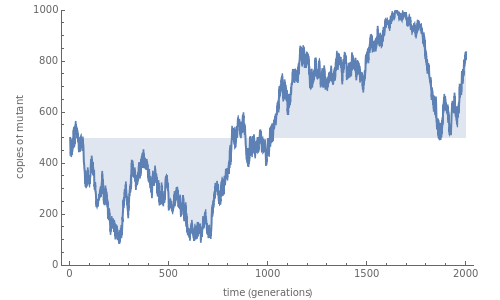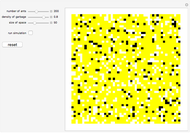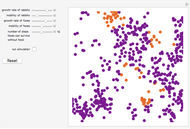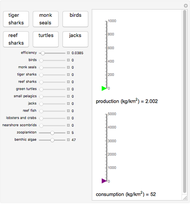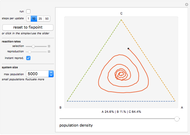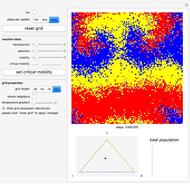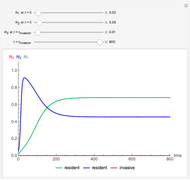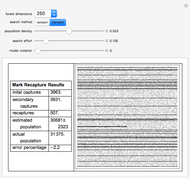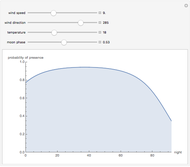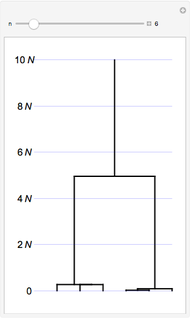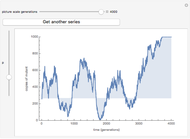Genetic Drift of Allele Frequency

Requires a Wolfram Notebook System
Interact on desktop, mobile and cloud with the free Wolfram Player or other Wolfram Language products.
Genetic drift is the random change in allele frequencies due to sampling a finite number of parents. The chart shows the allele frequency as it changes under random genetic drift in a haploid, Wright–Fisher population model with 1000 individuals. A mutant allele is initially present at a frequency  that you can vary with the left-hand slider; it will eventually rise to fixation or be lost. Each individual descends from a single parent in the previous generation, chosen randomly from 1000 possible parents.
that you can vary with the left-hand slider; it will eventually rise to fixation or be lost. Each individual descends from a single parent in the previous generation, chosen randomly from 1000 possible parents.
Contributed by: John Hawks (March 2011)
Open content licensed under CC BY-NC-SA
Snapshots
Details
This Demonstration provides a standard example in population genetics: the simulation of change in allele frequency with random sampling of  parents. The allele frequency in generation
parents. The allele frequency in generation  ,
,  , is drawn from a binomial distribution with mean
, is drawn from a binomial distribution with mean  and
and  trials. Ultimately this recurrence will lead to fixation of one or the other of the alleles. A population of any size will evolve by a similar pattern; this Demonstration is limited to a single population size (1000 haploid individuals) for simplicity of manipulation. The scale slider allows zooming in on a smaller interval of time, to see the random variation from generation to generation.
trials. Ultimately this recurrence will lead to fixation of one or the other of the alleles. A population of any size will evolve by a similar pattern; this Demonstration is limited to a single population size (1000 haploid individuals) for simplicity of manipulation. The scale slider allows zooming in on a smaller interval of time, to see the random variation from generation to generation.
The Wright–Fisher population model and the process of genetic drift are covered in
W. Ewens, Mathematical Population Genetics, New York: Springer, 2004.
Permanent Citation
